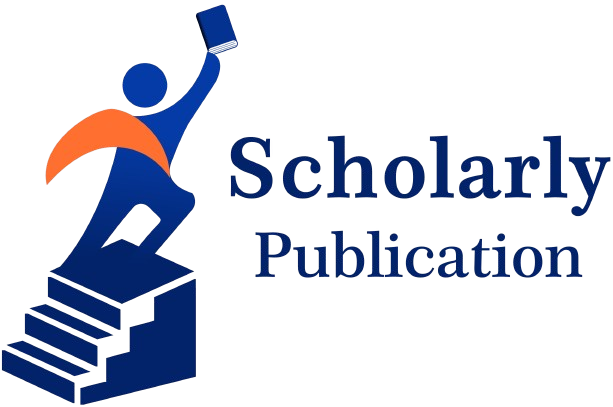Ethics Guidelines
Similarity Checking
Submissions to journals of Scholarly Publication are automatically screened using iThenticate/Turnitin’s Cross Check tools within the editorial system to detect plagiarism in submitted manuscripts. Plagiarism in a submitted manuscript must be below 15% for its further consideration.
Plagiarism and Misconduct Policy
Authors must attribute all borrowed words, figures, or ideas and cite sources where they are used. Reused wording should be limited and properly quoted. Manuscripts found to be plagiarized, whether from published or unpublished sources, will be rejected, and authors may face sanctions. Published articles may need correction or retraction.
Journal editors are responsible for investigating misconduct. They decide if retraction is needed and, in some cases, if the authors’ employers should be notified. While evidence is required, editors may not need to build a complete case if the employer has an existing investigation process. For less severe misconduct, such as dual publication or authorship deception, editors may choose not to involve employers. Authors must be allowed to respond to any allegations before any actions are taken.
Declaration of Competing Interest
Authors must disclose any financial, professional, or personal conflicts of interest that could affect their research or its interpretation. This includes financial ties, personal relationships, and academic competition. Disclosures should be clearly stated in the manuscript. If no conflicts exist, this should be explicitly stated as “The authors declare no competing interests”. These disclosures must be provided during submission and updated if necessary. The journal ensures privacy and may verify the declared interests and request additional information if needed.
Author Declaration
By submitting an article, the authors confirm that the work is original, unpublished (except as an abstract or thesis), not under review elsewhere, and approved by all authors and relevant authorities. Upon acceptance, the authors agree that it will not be republished in any form or language, including electronically, without the copyright holder’s written consent.
Guidelines for Inclusive Language
Inclusive language respects diversity, avoids bias, and promotes equality. Authors should refrain from making assumptions about readers’ beliefs or implying superiority based on age, gender, race, culture, sexual orientation, or disability. Writing should be free of stereotypes, cultural assumptions, and slang. Gender-neutral language is encouraged, using plural nouns (e.g., “clinicians, clients”) to avoid gendered pronouns. Descriptors related to personal attributes should only be used when relevant. Avoid exclusionary terms like “master/slave” or “blacklist/whitelist,” opting for alternatives like “primary/secondary” or “blocklist/allowlist.” These guidelines provide a framework for using respectful and inclusive language.
Authorship Changes Policy
This policy governs changes to authorship (addition, removal, or rearrangement of author names) in accepted manuscripts:
- Before Online Publication: Requests for authorship changes must be submitted by the corresponding author to the Editor-in-Chief of the respective Journal, including (a) a valid reason for the change and (b) written consent from all authors, including the author being added or removed. If the request doesn’t come from the corresponding author, it will be forwarded to them for proper submission. The manuscript’s publication will be paused until authorship is finalized.
- After Online Publication: No requests for changes to authorship will be accepted once the manuscript has been published online.
Author contributions
To ensure transparency, corresponding authors must specify each co-author’s contributions to the manuscript using the CRediT taxonomy, which includes 14 distinct roles. These roles encompass various aspects of scholarly work, such as Conceptualization, Data Curation, Formal Analysis, Funding Acquisition, Investigation, Methodology, Project Administration, Resources, Software, Supervision, Validation, Visualization, Writing – Original Draft, and Writing – Review & Editing. Note that not all roles will apply to every manuscript, and some authors may contribute to multiple roles.
Publishing Ethics
- For the Publisher
- The publisher is responsible for ensuring high-quality scientific publications and maintaining public trust in research. Scholarly Publication supports the efforts of journal editors and peer reviewers in upholding scholarly integrity and invests in best practices. We adhere to the Committee on Publication Ethics (COPE) guidelines and provide Similarity Check reports for all submissions.
- For Editors
- Ensure the peer review process is fair, unbiased, and timely, typically involving at least two independent reviewers. Seek additional opinions if needed.
- Evaluate manuscripts based solely on intellectual content, regardless of the authors’ race, gender, sexual orientation, religion, ethnicity, citizenship, or political views.
- Establish a transparent appeal process for editorial decisions in collaboration with the publisher.
- Maintain confidentiality of submitted material and reviewer communications, unless agreed otherwise.
- Work with the publisher to address and investigate any reported or suspected misconduct.
Copyright and OA Licenses
Authors retain copyright but grant the publisher broad rights to publish and distribute their work online. Authors have a license under which readers can use and share the article.
- Rights Granted to Authors
Authors retain copyright of their research articles published in the journals of Scholarly Publication, as articles are published under a CC-BY (Creative Commons Attribution 4.0) International License. This license allows for broad dissemination and reuse, including for commercial purposes, as long as proper attribution is given.
- Rights Granted to Publisher
Scholarly Publication holds the following rights for its published articles:
- Exclusive rights to publish, distribute, and grant permissions to others, including for commercial use.
- Rights to provide the article in various forms and media to ensure compatibility with future technologies.
- Authority to enforce rights against third parties, such as in cases of plagiarism or copyright infringement.
